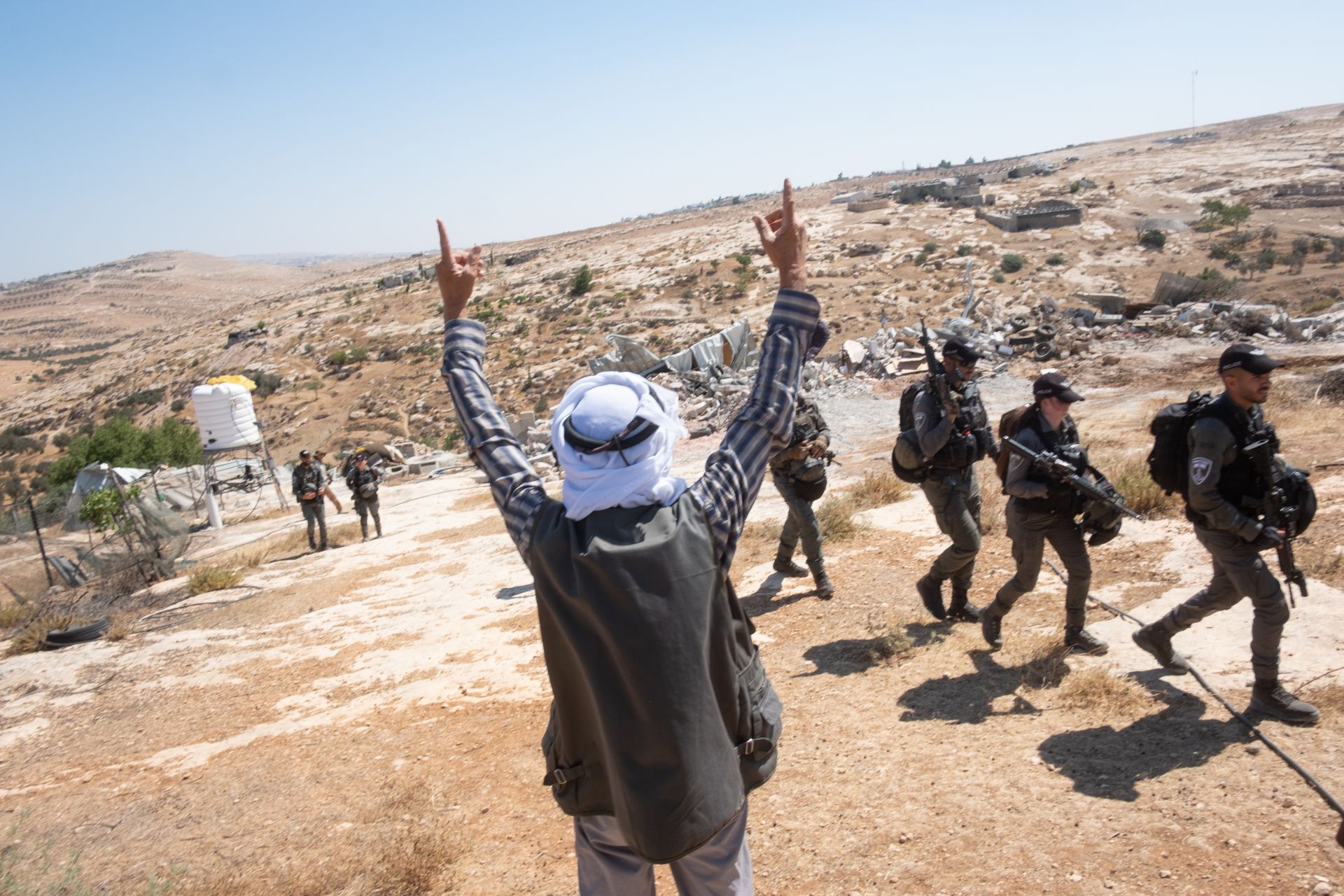It had been a quiet afternoon in the Palestinian village of At-Tuwani in the West Bank’s South Hebron Hills. But as Zakaria al-Adra, 29, stepped out of the mosque after Friday prayers he was met with shouts and screams. An armed Jewish settler carrying an assault rifle had entered the village and was shouting at the Palestinians to leave.
“I was sure he was going to try to kill everyone in the mosque,” said al-Adra, who approached the armed man and told him to stay away. There was a brief tussle between the pair before the settler suddenly pointed the gun at al-Adra and pulled the trigger, shooting the father of four at point-blank range. The bullet tore through his abdomen.
“Everything just went dark,” al-Adra said. He spent the next three months in the ICU at two different hospitals in the Hebron area.
Nine months later, and after 14 surgeries, he is alive but a shadow of his former self. Now 65 pounds lighter, al-Adra is still barely able to walk and is battling depression while coming to terms with the effect settler violence has had on his life — he can’t even pick up his own children. He says he feels that he has been destroyed physically and psychologically. No one has been arrested for his attempted murder.
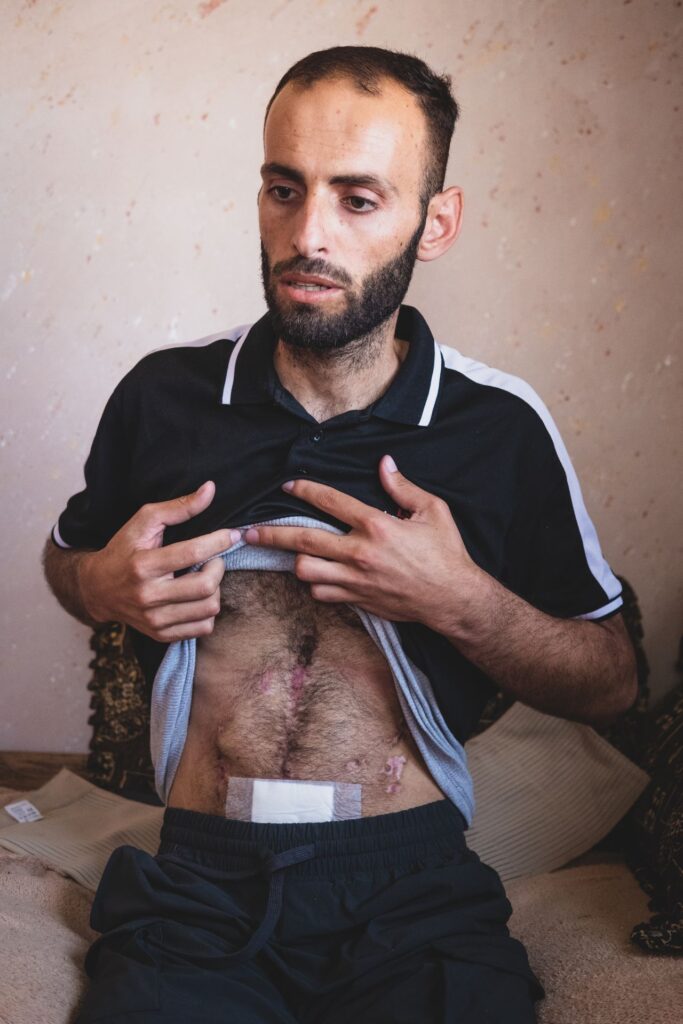
The shooting of al-Adra was the start of a new reality of escalated violence and harassment for Palestinians living across the area. The violence perpetrated by settlers and the demolition of Palestinian homes by the Israeli authorities have become more visibly entwined than ever in pursuit of the shared goal of Israeli expansionism across the occupied West Bank.
Since Hamas carried out its brutal attack on Oct. 7, precipitating Israel’s war in Gaza, the number of violent attacks against Palestinians in the West Bank has increased markedly. The United Nations Office for the Coordination of Human Affairs says that Israelis have carried out some 1,300 attacks that killed more than 21 Palestinians and injured at least 640, while settler violence has displaced 259 Palestinian households, affecting some 1,547 people, half of them children. In the same time period, settler violence caused the displacement of six villages in the South Hebron Hills, now a microcosm of the violence and displacement inflicted on Palestinians across the West Bank.
In the immediate aftermath of Oct. 7, Itamar Ben-Gvir, Israel’s far-right minister of national security, pushed to relax gun-licensing requirements and increase the number of civilian security teams, while also supplying them with hundreds of assault rifles. The result has been an explosion in gun-toting settlers threatening Palestinians across the West Bank.
Mauricio Lapchick, director of external relations and development at the Israeli nongovernmental organization Peace Now, said that the level of violence has escalated since the start of the war. “What we’re seeing — even though these issues were happening before the war started and the phenomenon of settler violence is not something new — is that it has now become a serious phenomenon throughout the West Bank.”
It was around 11 on a Wednesday night in July when phones began beeping with messages and calls about settlers setting fire to a swath of Palestinian agricultural land in the village of Khalet-e-Dabae in the South Hebron Hills. A group from a neighboring village had also spotted a number of cars from the nearby settlement of Havat Maon moving in the direction of the fire, so they jumped into a car and raced over to offer help. The men were barely out of the vehicle when a tidal wave of armed teenage boys and young men, chests bare and faces covered, emerged from the darkness and swept over the hilltop running toward the village. Panic shot through the Palestinians like a lightning bolt.
“We saw their lights and then their guns. What can you do? We just had to run,” said Salem al-Adra, 29, a cousin of Zakaria’s, who had come to help his neighbors.
Still carrying jerricans of gasoline, the settlers’ next target was Palestinian homes. They charged toward the group of Palestinians and activists — Israeli and foreign activists live with Palestinian families in the hope of mitigating the violence, a tactic known as “protective presence” — firing gunshots as they gained ground. Many of the villagers had gone to the nearby city of Yatta that day for a wedding, including Abbas Dababsi’s wife and all but one of his children. His 13-year-old son, Laith, was asleep in their home. Terrified for his son’s safety, the 39-year-old Dababsi ran as fast as he could to the house as the rest of the group ran in the opposite direction away from the village and the settlers.
“Wake up! Settlers have entered from the valley!” he shouted at his son. Laith sprung awake, immediately putting on his shoes and running out the door as fast as he could into the darkness, terrified. After some time, the boy found a big rock to hide under and tucked himself underneath it for over an hour, listening and waiting for his village to fall quiet again. When he cautiously returned home, he found that his father was gone.
“I thought my dad was dead when I learned the settlers had taken him,” Laith said.
At the last moment, Dababsi had been caught by the mob, who started to beat him before dragging him down into the valley where he says he saw dozens of Israeli soldiers.
“One of the settlers poured petrol on me and told me he was going to set me alight,” Dababsi said. “I was sure I was going to die at that moment. But a soldier stopped him.”
He was then blindfolded, his hands were tied, and he was bundled into a car with a soldier at the wheel. A few minutes later, the car stopped, the door was flung open and a settler subjected Dababsi to another round of beating, despite the soldier’s presence. He was eventually taken, barefoot and bloodied, to an army base in the neighboring settlement of Susya. After the severe beatings, he was no longer able to walk. But, he claims, the violent assault continued even on the base. “A soldier started clapping at me saying ‘walk, walk,’” Dababsi said. “Settlers were coming in and beating me. The soldiers brought in a dog and let him walk all over me while asking me if I was afraid.” Dababsi’s hands remained bound behind his back throughout the night, and when he spoke to the police the next morning, they accused him of setting his own land on fire.
“The whole time they had me, all I could think about was Laith,” Dababsi said. “I was beside myself with worry about him.”
Meanwhile, the rest of the group had sprinted into the darkness in a bid to escape the angry mob. Some of the Palestinians had pelted the settlers with rocks in an attempt to defend their homes. One Italian activist wasn’t quick enough, though, and was caught.
“I’m Italian, I’m Italian,” he screamed over and over as they beat him. The others were chased across the hilltops and valleys until they reached safety in a bigger village. Al-Adra had managed to jump back into the car with his friend driving. He saw settlers begin beating Dababsi.
“I called for an ambulance. I said there are settlers in the village, they’ve lit a fire, a man could die. But the [Israeli] police said everything was quiet and there was no problem,” al-Adra said. He contacted the Israeli police because Palestinian police have no jurisdiction over this area of the West Bank. Often, Palestinians call the Israeli police or the army because they have no other option. Reporting settler attacks to the Israeli authorities is also a preemptive measure — an attempt to avoid being accused of perpetrating the offense of which they are the victim.
“We stopped the car for a minute because I wanted to see where everyone was. Suddenly there was a gun pointed at my head. The man holding it said: ‘Go from here or I will shoot you in the head.’ He was dressed in an army uniform so I thought there was a mistake. I said to him: ‘My friend might die; the settlers are on a crazy rampage.’ My friend tried to speak to him, but he said: ‘If you don’t go now, I will kill you.’”
The pair made it to the edge of another village, where they got out of the car and tried to call some from the group who were on foot. As his father was confirming he was okay on the other end of the line, al-Adra spotted a farm utility vehicle heading toward them.
“We thought it was just one settler, but I looked down into the valley and I saw my father and behind him were 10 or so settlers, so we started to run. We had to clamber over lots of barbed-wire fencing, and my friend cut his leg. We just kept running and running until we made it to the village of At-Tuwani,” al-Adra said, adding that the fire truck was also attacked and was forced to retreat to safety.
The Israeli authorities released Dababsi the next day. He headed straight to the hospital, where he remained for several days receiving treatment for numerous injuries, including a broken leg.
“We don’t feel safe here. This attack has really cemented that,” said Dababsi, speaking to New Lines from a daybed in his home in Khalet-e-Dabae, unable to walk while his injuries heal. One sliver of good news is that the municipality has continued to pay the wages for his job as a garbage collector in Yatta. But little can be done to ease the days of boredom or the feeling of powerlessness to protect his family should another attack like that happen again — which he is sure is only a matter of time.
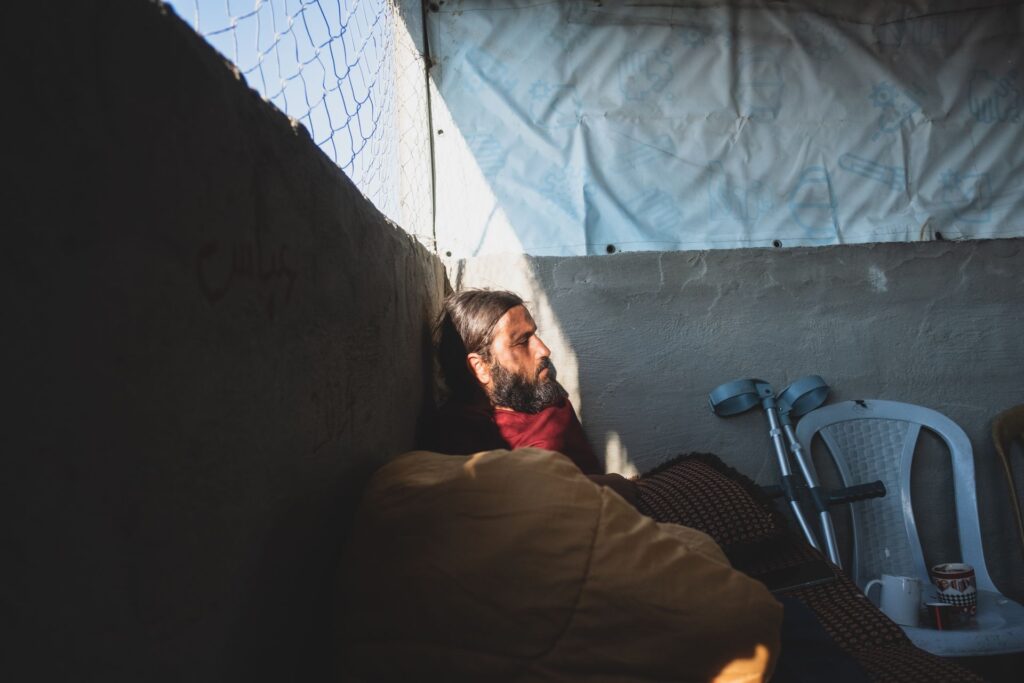
Khalet-e-Dabae is positioned on a hilltop — a desirable location for the settlers who want to seize its land and already surround the village. Since Oct. 7 the number of illegal outposts encircling Khaled-e-Dabae has increased at an alarming rate; so, too, has the pressure and harassment. Israeli settlements in the West Bank are illegal according to international law, while Israeli outposts built without permission are also illegal under Israeli law. But the Israeli authorities rarely enforce the law against unauthorized settlements. Settler violence and home demolitions by the Israeli authorities are not new to this community, which is in an area that was declared an Israeli military firing zone in the 1980s, meaning the automatic expulsion of those in the Palestinian villages within the designated area. Residents of Khalet-e-Dabae are renovating caves to move into because living above ground has become so problematic and unsafe. But the attack that took place that night was on a scale that all said they had never experienced before. Many believed they would be attending funerals the following day.
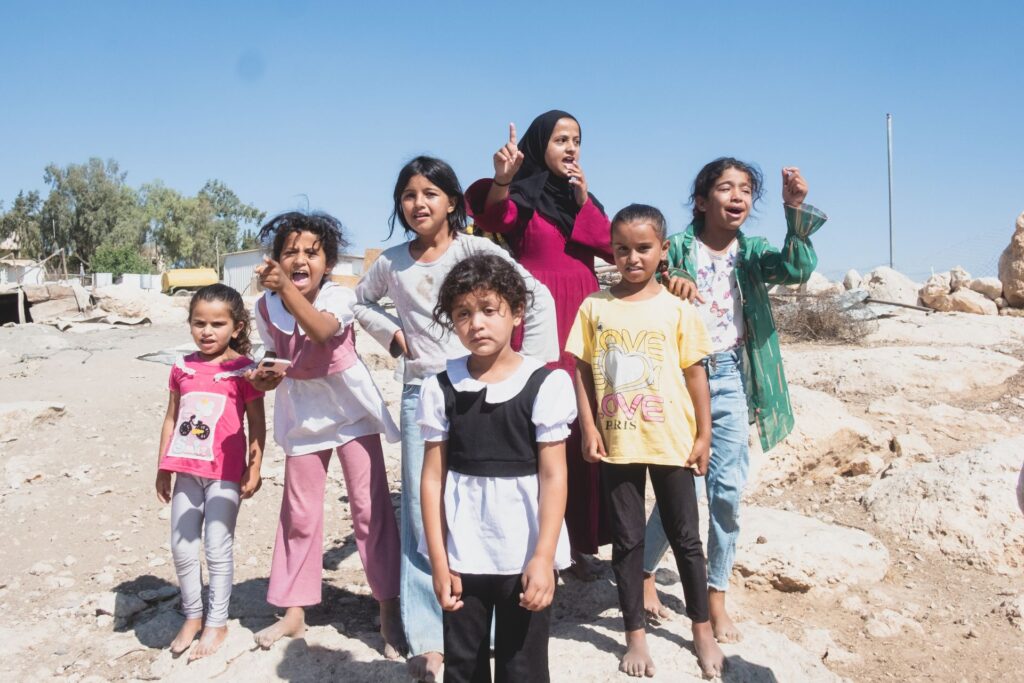
Palestinians, activists, rights groups and lawyers all say they have witnessed an increase in the intensity of settler violence and restrictions on Palestinians since Oct. 7, from road closures to home demolitions to blocking ambulances from reaching or transferring patients. Some of the explanation for this uptick in violence is that the focus on Gaza has diverted attention, but observers of the situation in the West Bank warn that the state of Israel is increasingly complicit in settler violence and land transfers.
According to a report published on Sept. 9 by the International Crisis Group (ICG), the ongoing uptick in violence in the West Bank was significantly exacerbated after Oct. 7 by the army’s decision to mobilize reservists from the settler population, thereby freeing up regular forces to fight in Gaza or on the northern border with Lebanon.
According to the ICG report, the military distributed “at least 7,000 military-grade weapons” to units serving in the West Bank that are composed of reservists who are also settlers, as well as to “civilian settlers eligible to carry them.” Officially, the purpose of arming these men is to enable them to protect their own communities, but since the relaxing of gun laws following Oct. 7 there has been a rise in armed vigilante attacks against Palestinians. There have been many recorded cases of settlers in army uniform participating in such attacks. This is the source of the term “settler-soldier,” meaning Palestinians are now often unable to tell whether a settler in army uniform is acting in his official capacity as a soldier or as a settler who also happens to be wearing the uniform. The number and strength of volunteer rapid response teams with the self-described mandate of protecting the settlements throughout the West Bank has also increased significantly since Oct. 7. Some of these teams are leading attacks like the one on Khalet-e-Dabae.
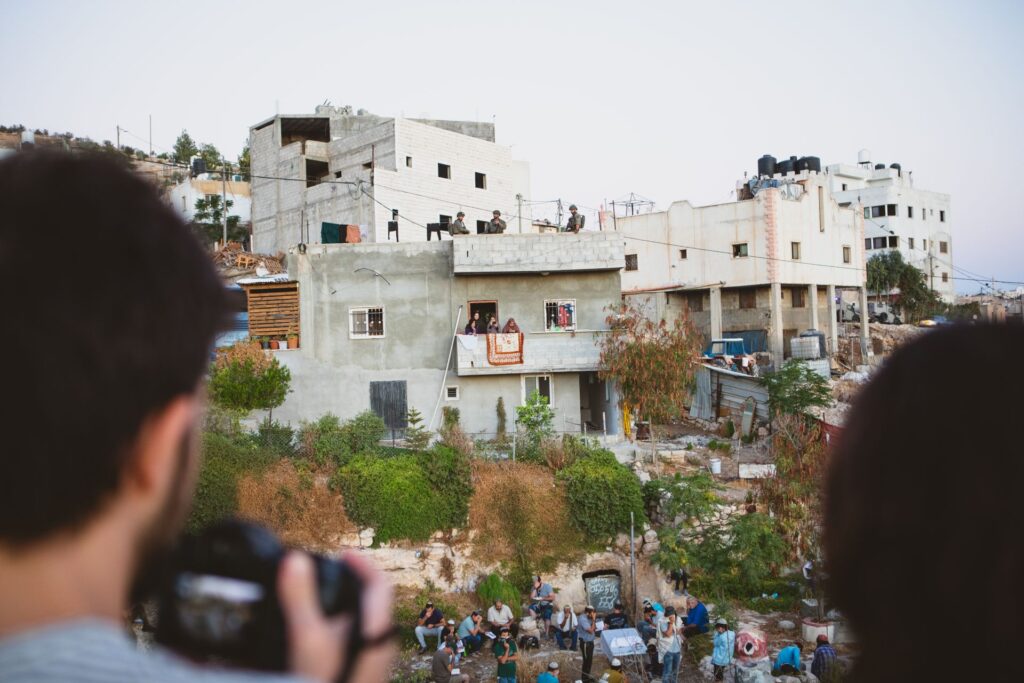
“Before Oct. 7, we saw the army was in some cases working together with settlers, because at the end of the day there is a relationship there,” said Peace Now’s Lapchick. “We’ve seen, since October, these relationships, the way the army works with the settlements, has become much stronger and clearer to identify.”
An archive of violent incidents and harassment against Palestinians, maintained by numerous human rights groups and activists, shows that for each month since Oct. 7 the number of incidents recorded has been more than double the number committed during the same period in each of the previous three years. It is an eye-watering escalation.
On July 19, just as the International Court of Justice was set to announce its advisory opinion that Israel’s presence in the West Bank is illegal and must end, settlers launched a brutal attack on the village of Sheb al-Batem. “Settlers came onto Palestinian land to graze their sheep,” said Wadtha Al Najar, a woman in her 50s who was badly beaten in the attack. “The owner of the land tried to make the settlers leave, but things escalated and that’s when more of them turned up at the house.”
Five settlers, their faces covered and three armed with batons, entered the property and approached the small group of Palestinians, among them Al Najar, as they sat on the terrace. One of the masked men walked up to Al Najar’s nephew Anan, 38, aggressively threatening him before swinging his baton and smashing it into Anan, followed by two more strikes. He began collapsing on the floor. Al Najar leaped up from her chair instinctively, moving to protect her family member as he lay unconscious. She threw herself over him and a second settler began raining down blows, joined seconds later by the first armed man, before the pair were dragged away by another of their group. A so-called “settler-soldier” dashed into the garden, firing his weapon into the air while facing the Palestinians. The threat was directed at them, not the violent attackers. Much later, Israeli military forces arrived at the scene.
“If I hadn’t thrown myself in the way of Anan and the settlers, they would have just kept beating him while he was on the ground. So they beat me instead,” Al Najar said as she wiped away tears. “I would rather die than to have left him unprotected.”
Both Anan and Al Najar suffered wounds that suggested the batons had been modified with sharp blades or barbed wire, although New Lines could not confirm this was the case. Both needed stitches across their scalps.
For a little while after the attack, a shaken Al Najar took refuge in a relative’s home in nearby Yatta while she recovered. It was here that a reporter for New Lines met her. Had it not been for the video footage of what happened, it would have been hard to imagine this somewhat frail, older lady summoning the courage to withstand the beating she surely knew was coming if she got in the way of the violent young settlers. But when asked about how she was feeling in the aftermath of the attack, she responded with defiance.
“It is my home, and I will keep defending it; it’s my whole life. Can they hurt us any more than this?” Al Najar said. She said that she did not know any other woman in the area who had suffered a serious beating like this. “We were there before the state of Israel was created,” she said. “Why is no one stopping these criminals from attacking us?”
Israeli, international and Palestinian activists were present when the attack took place and were able to document it. When asked whether the activists’ presence was still important considering the severity of the attack, Al Najar answered that without them, she is sure the outcome would have been much worse.
Lapchick explained how the polarized treatment of Palestinian and Israeli residents of the West Bank manifests in the official policy toward illegal infrastructure. Over the past year, settlers have established “at least” 25 illegal outposts, he said, without repercussions. But the army destroys only the Palestinian buildings that it says have been built illegally.
“The position is very clear — while settlers can expand outposts, build roads and other things, there is an aim to cut the Palestinian continuity,” he said.
Last year, the government approved a record-setting 13,000 building permits for new settlement housing units and, according to the ICG, an “unprecedented” number of new settler outposts. This year almost 6,000 acres have been deemed owned by the state of Israel — a larger land grab than in any other calendar year.
The ICG report calls for sanctions against Israel’s extremist politicians, including Finance Minister Bezalel Smotrich and National Security Minister Itamar Ben-Gvir, who support the settler movement. The two far-right members of Netanyahu’s governing coalition “provide fellow settlers engaged in violence against Palestinians with the state’s political, economic and legal backing,” according to the report’s author, Mairav Zonszein.
Approximately 620,000 Israeli settlers live in the West Bank, including East Jerusalem, which Israel has controlled since the 1967 war, governing the Palestinian population with military rule, while settlers are governed by Israeli civil law. The West Bank is also home to about 2.2 million Palestinians. Per the 1993 Oslo Accords, the territory is divided into three administrative zones: Area A, where the Palestinian Authority (PA) administers civil and security matters; Area B, where the PA administers only civil matters; and Area C, the largest area, where Israel maintains full control. The majority of the villages in the South Hebron Hills are in Area C; it is almost impossible for Palestinians to obtain permission from the Israeli authorities to build there.
In August, Ronen Bar, the head of Israel’s General Security Services, popularly known by its Hebrew acronym Shin Bet, warned Netanyahu, in a letter that was also sent to the attorney general and members of the Cabinet, that Jewish terrorism was out of control and had become a threat to Israel’s national security. In the letter, which was published by Channel 12 News, Bar accused the far-right members of Netanyahu’s government of causing “indescribable” damage to Israel’s security by letting the extremist settlers, often called “hilltop youth,” carry out a campaign of murder, arson and intimidation with the apparent approval of the government. This spectacle of bloodshed would lead to Israel losing global legitimacy “even among its friends,” wrote Bar.
The village of Umm al-Khair, approximately 7 miles from Sheb al-Batem, has suffered more than its fair share of violence and demolitions. The settlement of Carmel, established in 1981, was built right on the doorstep of the Palestinian village. The settlement’s imposing yellow-painted metal gates separate the two communities. So close are some of the Israeli homes that their rear terraces overlook the village. Early one morning at the end of June, a bulldozer flanked by Israeli military and border police entered Umm al-Khair. The residents knew this meant someone’s home would be razed but did not know until the last moment whose it would be. The toothy metal bucket of the bulldozer began ripping through the concrete walls and corrugated iron grooves of a Palestinian home, reducing it to rubble in a matter of seconds. Through a great cloud of dust, the sounds of screeching metal and the machine’s roaring engine filled the air as it crunched its way through the house.
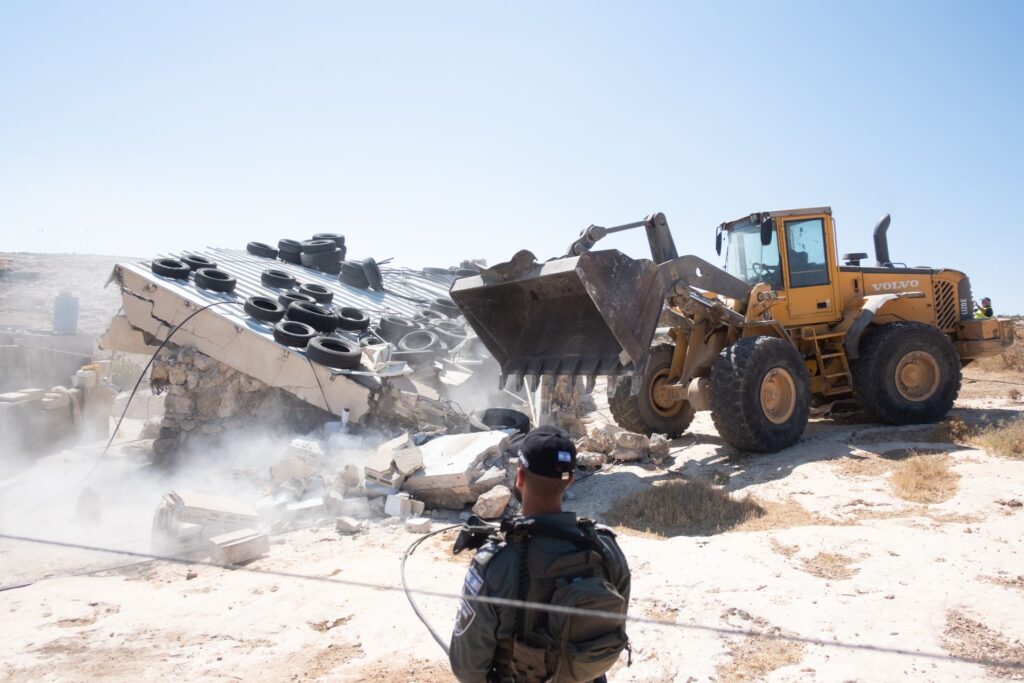
Acting on the orders of the Israeli Civil Administration, the driver of the bulldozer tore through 11 houses in the village in one day, leaving 50 people homeless, as residents stood by watching helplessly. On Aug. 14 Israeli authorities also destroyed the tents that villagers pitched to shelter the people who had lived in the now-demolished homes.
Eid Hathaleen, 40, an artist and activist, saw the home in which he had lived with his wife and children for 17 years demolished.
“It feels like a living nightmare,” he said. “It takes just 10 minutes to demolish a home, but it takes a long time to rebuild it. And where should we go? We’re not allowed to build in the same place but there is no other land around here.”
Palestinians are often forced to move into already cramped homes with relatives or, in Hathaleen’s case, move into other infrastructure, like warehouses, as they attempt to rebuild, knowing the building is likely to be pulled down again. As a last resort, they move to nearby towns and cities. If they leave the land, though, this can often mean that more land is lost to the settlers as the Palestinian owners are no longer there to protect it.
During a warm evening in August, groups of friends sat outside on the large terrace of one Palestinian family’s home in the village of At-Tuwani. There was laughter and chatter as men smoked shisha, women drank tea and children ran around giggling. As the sun sank behind the hills and darkness enveloped the village, whistles suddenly began to ring out across the village rooftops. It was an alert system to let residents know settlers were present.
Immediately the calm of the evening was punctured with panic. The women jumped up to run indoors, scooping up children and voicing shrieks of fright as they went. The men raced to the edge of the garden, their eyes on the land, watching for any movement. Dogs barked. The lovely evening with family and friends was over. This is life, day in, day out, for Palestinians living in Area C. If it’s not direct violence, it’s trees chopped down, plants dug up, donkeys stolen, settlers trespassing on Palestinian land, leaving the message that the threat of violence is always there.
“The settlers and the Israeli authorities want to make it impossible for us to live here,” is the sentiment repeated throughout Palestinian communities.
The Israeli authorities did not respond to a request from New Lines for comment on the incidents reported in this article.
Become a member today to receive access to all our paywalled essays and the best of New Lines delivered to your inbox through our newsletters.



